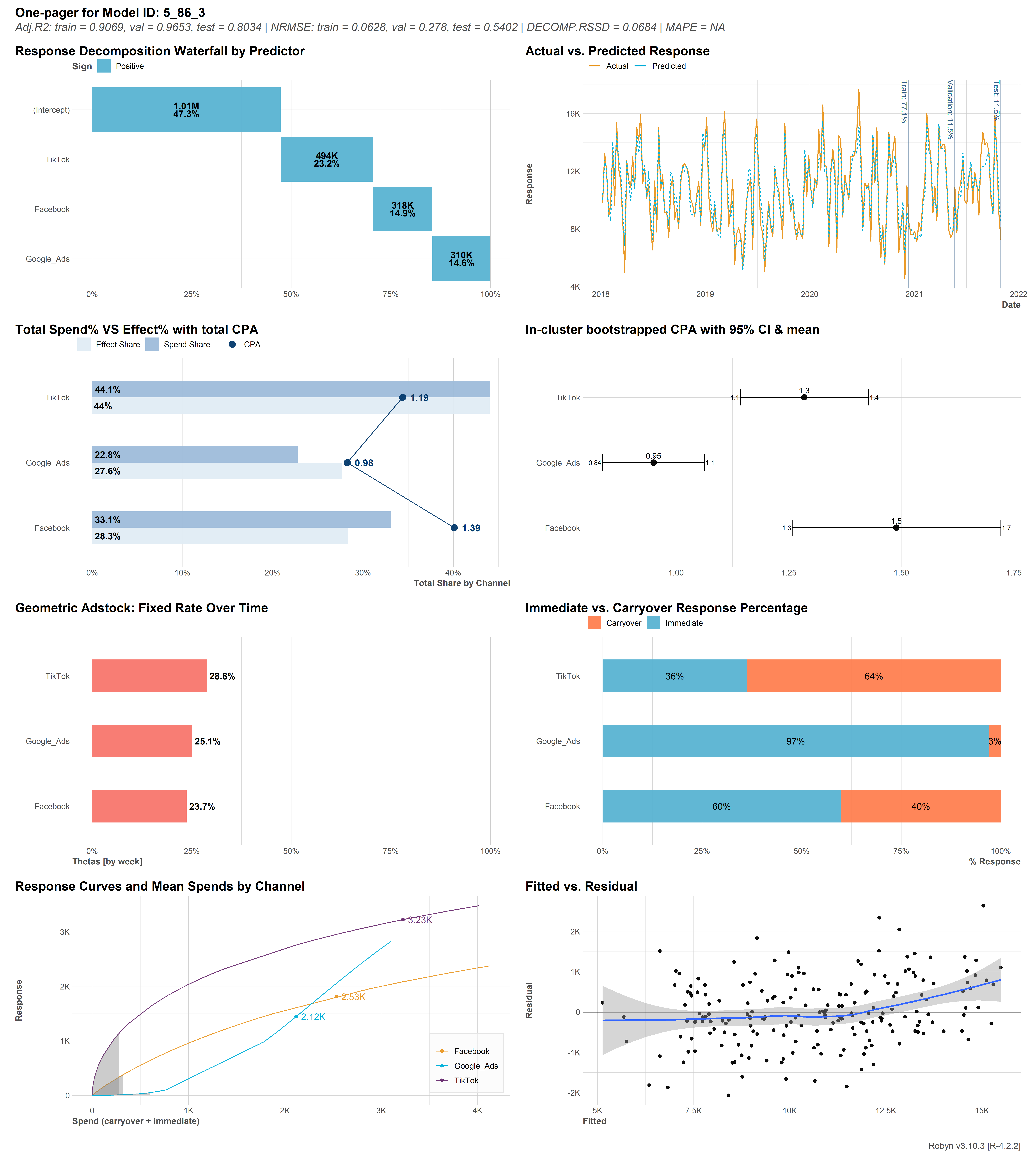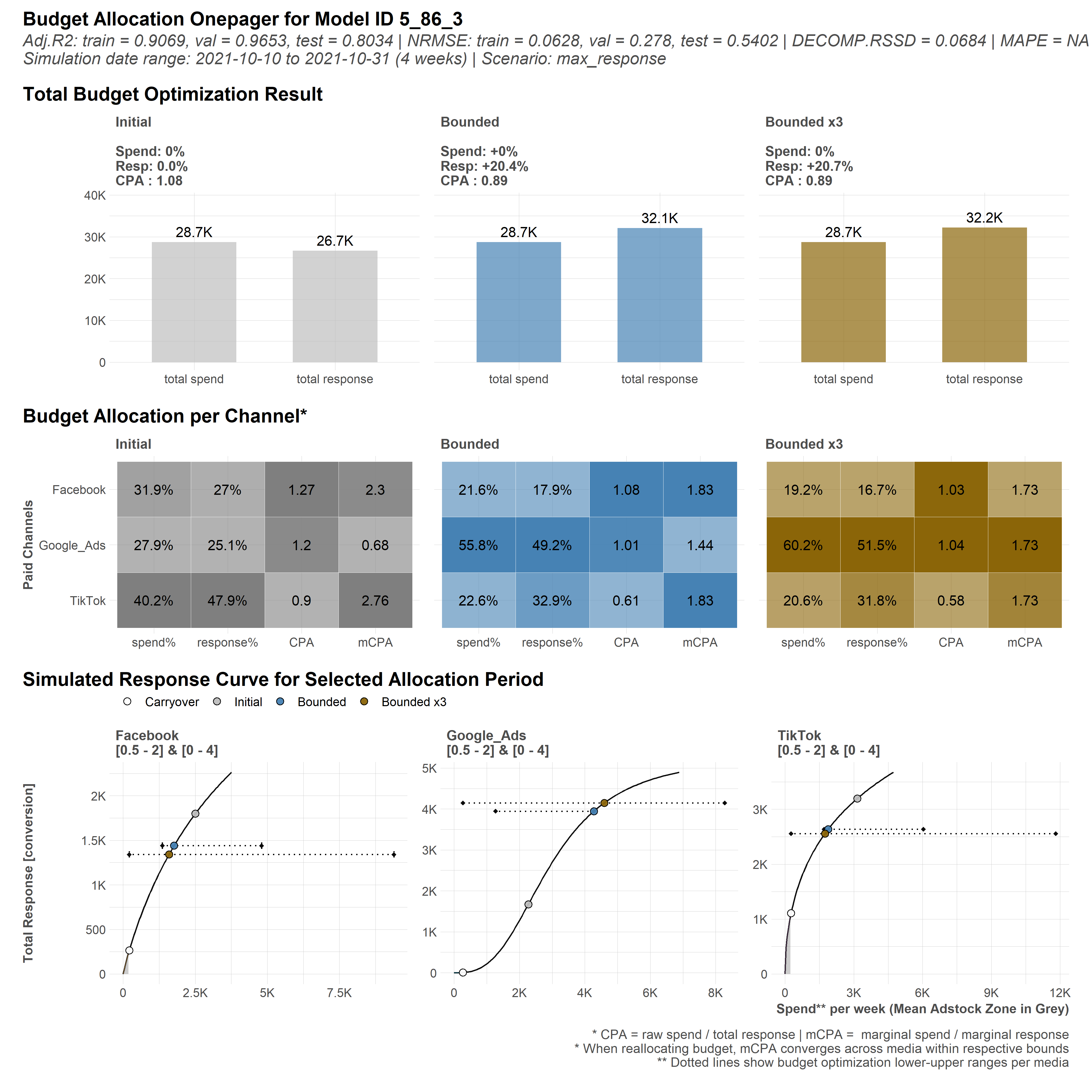Methodology
In order to achieve this, I have used the Robyn MMM package. Fitting prior synthetic spend data broken out by tactic and sales over time will generate models with response curves which can be used to forecast what the most optimized allocation will be in this hypothetical case study.
Model Selection
After generating a selection of models, I am selecting Model 5_86_3, which I will from here on refer to simply as 'Model'. I am selecting this model as it has the highest r2 with both the test and validation set, as well as tighter confidence intervals for the CPA by tactic.


Reallocation
Now that a model has been selected, I can use the projected response curve to reallocate funds to maximize sales. In this sample case, the reallocation is projected to lead to an additional 5k sales.


In addition the curves can be extracted in order to make a dynamic dashboard, so that budget allocation can be a more interactive experience with stakeholders.
I go more in depth on this topic in my blog post on the subject.
Resources Used
Meta's Robyn MMM open source R package, Kaggle user Veerendra's sample data.

